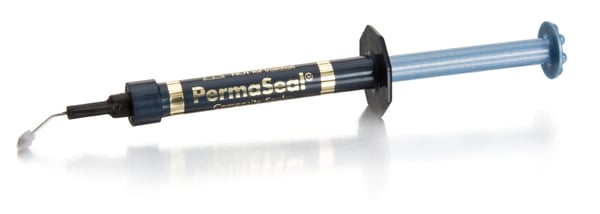by Dr. Joshua Austin, originally published in Dental Economics.

The operative dentistry faculty at my alma mater, the University of Texas Health Science Center at San Antonio, were huge advocates of rebonding when placing resin composites. That term-"rebonding"-may not even be familiar to many readers. Rebonding is a simple process that involves flowing a very thin layer of unfilled resin onto composite. The literature supports rebonding; however, almost no one does it clinically on a regular basis. I am not 100% sure why, either. It's a quick and simple process, and it can really improve the quality of the composite resins we place.
PermaSeal composite sealer by Ultradent Products Inc. makes rebonding easy because of its simplicity. Rebonding can be done on new composite resins to seal the margins and fill in any microscopic voids and/or irregularities. Studies show that rebonding reduces microleakage, which is a huge advantage. After placing a composite resin , the restoration should be smoothed and adjusted, and the occlusion should be checked. Make sure all articulation paper marks are removed from the restoration and the tooth. The tooth and restoration should be dried and etched with phosphoric acid for 10 seconds or so. PermaSeal composite sealer is then applied in a thin layer to the restoration and adjacent enamel for five seconds, air-thinned, and cured. The PermaSeal sealer is so thin that, usually, no occlusal adjustment is needed! In less than one minute, you can effectively reduce the chances of microleakage. Not bad!
PermaSeal composite sealer can also be used on old composite restorations to revitalize them. The surface of the old composite should be cleaned and pumiced thoroughly, and then it should be etched with phosphoric acid. After this, PermaSeal sealer can be applied just as it would be with a new restoration. The PermaSeal composite sealer will give the old composite a new luster and fill in any microgaps that might have developed over the years.
Another good indication for PermaSeal composite sealer is as a glaze on anterior provisionals. Many times, after adjustment and polishing, bisphenol A-glycidyl methacrylate (bis-GMA) products can have a matte finish. An application of PermaSeal composite sealer will brighten these up and give them a more natural appearance that will keep single anterior provisionals from standing out as much.
Obviously, PermaSeal composite sealer has a few indications that would make it handy to keep in your practice. Check out the literature on rebonding to see how much of an advantage it can give us when placing resin composites. I think you will be surprised to see how quickly and easily you can give your restorations the best possible chance at thriving in your patients' mouths! Line-drive single up the middle for Ultradent!


.png)




